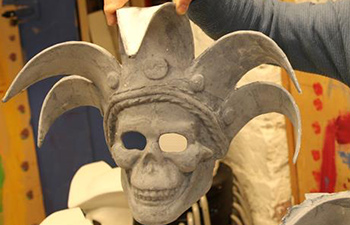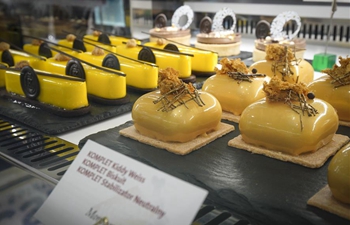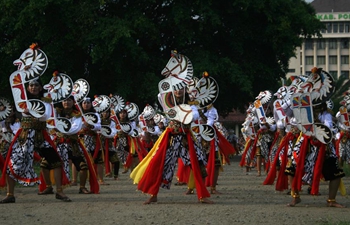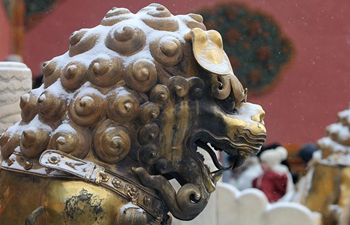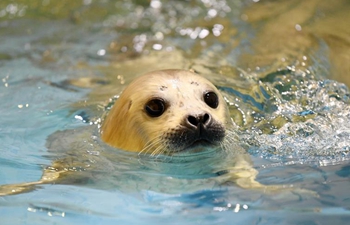BEIJING, Feb. 19 (Xinhua) -- A recent research found that a prehistoric platypus-like reptile living around 250 million years ago possibly relied on tactile sense to prey in the dusk or darkness.
An international team of researchers led by Cheng Long, a paleontologist at the Wuhan Center of the China Geological Survey, examined fossil specimens of E.carrolldongi unearthed in China's Hubei Province.
The species is part of an array of marine reptiles called Hupehsuchia that lived about 250 million years ago in a vast lagoon spanning hundreds of kilometers in today's Hubei Province. It lived during the early Triassic period, a time before dinosaurs ruled the Earth.
According to the researchers, with its 70-centimeter long body, E.carrolldongi had four flippers and triangular blades reminiscent of the dorsal plates of Stegosaurus sticking out of its back.
Compared to its lengthy body, the creature had a tiny head with its eye sockets only about one centimeter wide. The researchers therefore concluded that it most likely did not rely on vision to hunt.
The possibility of using hearing to hunt was also ruled out as sound travels fives times faster in water than in air and sound localization in water is difficult for animals with small heads. The nose openings did not exhibit any specialization, making special enhancement of olfactory sense likely.
Meanwhile, the prehistoric creature lacked a structure in its palate that helps convey chemical information from the tongue to other sensory organs, which means it probably couldn't taste much by flicking its tongue.
"This leaves the tactile sense as the most likely candidate among the traditional five senses," said the researchers in the paper published in a recent issue of British journal Scientific Reports.
The researchers explained that the snout of E.carrolldongi looked similar to that of the platypus. The prehistoric reptile could flick its head to the right or left and ate shrimp or other shrimp-like invertebrates after it came in contact with them.
This research makes E.carrolldongi the oldest known amniote, a group that includes birds, reptiles and mammals, to use a sense other than sight to find its prey.
They added that electroreception, by which predators sense electric fields generated by moving prey to feed, cannot be ruled out. If it were proved, E.carrolldongi would share another commonality with platypuses.





